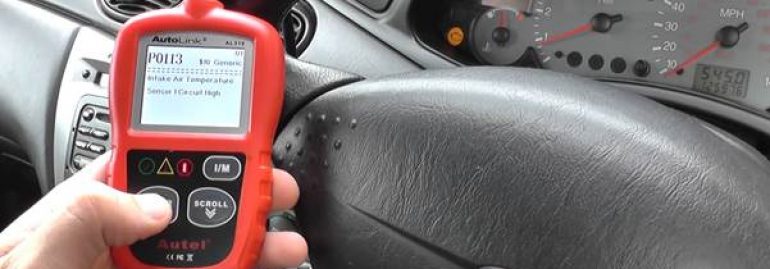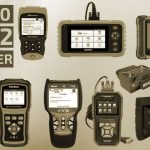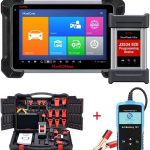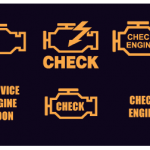You may have a vehicle with a code that appears on your dashboard. This could be a warning for a major problem, but how do you interpret these codes? This article discusses the difference between Manufacturer-specific and Generic codes, as well as what they mean. In addition, we’ll look at some common causes for automotive diagnostic codes, and help you figure out how to resolve them. Ultimately, you’ll know if a particular code is causing your car problems.
OBD-II
The OBD-II automotive diagnostic code system is an internationally accepted standard for troubleshooting your vehicle. It is organized by the Society of Automotive Engineers (SAE) into groups of codes according to their system requirements. The first digit indicates the code type, while the second and third digits denote the system a car has. For example, P0 indicates a powertrain problem, while P1 specifies a mass air flow sensor or fuel metering system problem.
The OBD-II system is constantly monitoring the engine and its Emissions Control System, turning on the Check Engine Light when it detects a malfunction or a failure. When it finds that emissions have exceeded the Federal EPA emission limits, it will turn on the Check Engine Light. The OBD-II is connected to the vehicle’s engine through a 16-pin connector called the Diagnostic Link Connector (DLC). Depending on the make of your car, you may need to find the DLC with the help of your owners manual. Using a scanner, a message such as “searching protocol” will appear on the scanner’s screen.
The most common OBD-II automotive diagnostic codes are B-codes and P-codes. These codes refer to problems in the engine, transmission, and other drivetrain components. P-codes refer to issues within the engine, transmission, and associated accessories. While the P-codes refer to vehicle functions, U-codes refer to common problems across all systems and computers in the car. Most trouble codes are generic, but some are manufacturer-specific. You can look up these codes on a search engine or read explanations in the manual.
OBD-II codes can indicate various problems with the car’s engine. They also show problems with the air conditioning system, such as compressor failure. When these problems are caused by the vehicle’s faulty air filter, the system is more likely to be faulty than it is to be a symptom of a different problem. OBD-II codes are not always easy to diagnose, which is why it’s vital to use proper tools to read them.
Manufacturer-specific
You may be wondering how to read your vehicle’s DTC codes. There are a few ways to do this. The most common way is to purchase an OBD-II scan tool. This type of tool plugs into the diagnostic port on your car and reads the code, but you may also need software to interpret the code. Code readers, on the other hand, are less expensive, but they aren’t as comprehensive as scanners.
OBD2 codes are made up of four numbers and a letter prefix. These are typically read with a scan tool and used to troubleshoot your car. The first number specifies the code type, the second number indicates the specific system of your car, and the last two digits indicate a fault designation. Once you’ve identified the code, you can work to repair your car. To use an OBD-2 scan tool, make sure you know your car’s OBD-II compatibility.
OBD-II systems are required in most cars and light trucks manufactured after 1996. DTCs, or diagnostic trouble codes, are five characters long and provide a variety of details about a vehicle’s condition. DTCs are not easy to read without a mechanic’s knowledge. If you have any questions, you can contact your car’s manufacturer or dealer. In addition, you can find the diagnostic connector in your vehicle’s manual.
A check engine light on your dashboard usually means a problem with your vehicle’s engine management system or another function. The DTC, or diagnostic trouble code, is a five-digit code that indicates the problem and can be accessed by an OBD scanner. The codes are updated regularly as problems arise. They can be categorized into generic and manufacturer-specific codes, where generic codes are used by many different manufacturers, while manufacturer-specific codes are used only for a particular make and model.
The engine control module is the main computer in most new cars. Also known as an engine control unit or powertrain control module, the ECM is connected to a gateway or telematics system. With the right diagnostic tools, you can monitor the fault codes in your vehicle remotely and fix them yourself. With these tools, you can even get a free diagnosis from a mechanic. With a little practice, you can diagnose your vehicle’s problems without the need to pay a fortune for the repair.
Generic
In the world of cars, generic automotive diagnostic codes have many uses. They can help you determine if there is a problem with your vehicle. The first letter of a DTC is a identifying factor that determines which category the code belongs to. The other three digits are the generic codes. Some DTC codes are used for specific functions, such as emission diagnosis. There are over 11 thousand different types of DTCs.
The most common diagnostic codes are OBD2 and CAN. These codes are unique to each model, but generic codes are universally useful. To find the generic codes in your car, you can use a scan tool or a professional OBD2 software. These codes are easy to understand and use. However, you must use them with your car’s service manual to prevent further damage to your vehicle. This article will introduce you to generic automotive diagnostic codes, along with some helpful tips to troubleshoot and repair your car.
Some generic automotive diagnostic codes are used in emissions control systems. For example, codes P0400-P0499 are associated with the fuel injectors, which indicates an ignition problem. Similarly, P0500-P0599 deal with auxiliary emissions controls, which help reduce air pollution and protect the environment. And last but not least, P0500-P0599 deal with the idle and speed control systems, which prevent fuel vapors from escaping into the atmosphere.
Generally, a DTC will indicate a malfunction that is a result of a malfunctioning component. This is done with the help of a fault manual published by the Society of Automotive Engineers. Generic automotive diagnostic codes are also helpful for DIY diagnostics, as they allow you to diagnose issues with your vehicle without an expensive trip to the dealership. However, if you have no experience with diagnosing a car, it is not recommended for you to attempt the repairs yourself.
There are several ways to determine the cause of a P0033 code. First, if the O2 sensor is faulty, the code will tell you about the problem. To get the exact problem, you can check the manufacturer’s website or online. For more comprehensive solutions, you can install a scan tool. This diagnostic software communicates with the vehicle computer without altering learned settings. If you’re not sure about a particular code, try looking for it in the manual.
Check engine light
If your car’s Check Engine Light comes on, don’t panic. It’s a simple, but sometimes scary, problem to tackle on your own. There are several common problems that can be caused by this problem, including a misfired engine. Misfires can lead to serious consequences, including a damaged catalytic converter or an expensive repair. The best course of action is to take your car to a mechanic, who can diagnose and repair the issue.
The problem could be anything from a faulty fuel system to an emission control system. To determine what’s causing the light to come on, look for the OBD (On-Board Diagnostic) codes. They are a vital aspect of vehicle maintenance, and understanding how to interpret these codes is a must-know skill. Once you know what codes mean, you can properly diagnose the problem and fix it. A basic understanding of OBD codes is essential for any mechanic.
DTCs or Diagnostic Trouble Codes are codes generated by the on-board diagnostics system of a vehicle. These codes identify and diagnose a fault in the vehicle and display them as a visible warning. OBD systems are essential to drivers and mechanics alike. However, not everyone has the training to interpret these codes. A professional mechanic can interpret the codes and give you accurate diagnosis and repairs. And a qualified mechanic can quickly fix a problem that would otherwise cost you thousands of dollars.
The Check Engine Light indicates an underlying problem in your car’s powertrain. This issue could affect your vehicle’s operating temperature, emissions, or any other factor that may be affecting its performance. The car computer also logs diagnostic trouble codes that help the mechanic diagnose the problem. The codes are organized according to manufacturer and vehicle type. The first number in a code sequence (P0) indicates a generic issue in the powertrain, while the second digit, “1,” means a specific problem in the fuel or air metering system, or mass air flow sensor.
The most common car problems are also listed by FIXD. The app will analyze data from 18 million vehicles by 2020, and help customers identify the causes of these problems. Using this app, consumers can easily read the warning lights and save money on auto repairs. If you’re unable to find a local mechanic to help you with your car, you can always schedule a free car diagnostic scan at an AutoZone store.






